Beretta M9A3 Type G 9mm Pistol, Flat Dark Earth – J92M9A3GM For Sale
$998.97
Is the Beretta M9A3 discontinued?
Yes, the Beretta M9A3 has been discontinued.
Why did the Army reject the M9A3?
The U.S. Army rejected the M9A3 proposal as an upgrade to the existing M9 handgun primarily because they were seeking a more comprehensive solution beyond what an upgraded version could offer. Instead of upgrading the existing M9, the Army was interested in a new Modular Handgun System (MHS) that would provide improved performance and features such as better ergonomics, increased reliability, and adaptability to various calibers and accessories. The Army wanted a more modern design that could integrate advancements in handgun technology, prompting them to opt for a new competition to replace the M9 entirely rather than an incremental upgrade.
What is the difference between M9A3 and M9A4?
The primary differences between the Beretta M9A3 and M9A4 pistols include improvements and upgrades in the M9A4:
1. **Optics-Ready Slide**: The M9A4 features a slide that is cut for optics, allowing for easy mounting of red dot sights, which is absent in the M9A3.
2. **Trigger**: The M9A4 typically comes with an improved trigger system that provides a smoother and more consistent pull.
3. **Color Options**: While both models are available in Flat Dark Earth, the M9A4 may have additional color variations depending on availability.
4. **Barrel and Threading**: Both models have threaded barrels for suppressors; however, there might be slight design adjustments for compatibility with various suppressors as updates are made.
5. **Grip and Texture**: The M9A4 may feature enhanced grips or textures for better handling and ergonomics, although both models have modular grip panels.
These enhancements generally reflect the evolution of the M9 platform to incorporate modern tactical features and user preferences.
Is Beretta M9 better than 92FS?
The Beretta M9 and the Beretta 92FS are very similar, as the M9 is essentially a military variant of the 92FS. Both are 9mm semi-automatic pistols with similar designs, functionality, and build quality. The differences between them are quite minor:
1. **Markings**: The M9 has specific military markings and a different slide inscription compared to the civilian 92FS.
2. **Slide Design**: Some versions of the M9 feature a slightly different slide design with a more squared-off front and a half-circle on the dust cover.
3. **Sights**: The M9 generally comes with a dot-and-post sight system, while the 92FS often has a three-dot sight system.
4. **Grip**: There may be small differences in the grip texture and feel between different runs or batches.
From a functional standpoint, they are largely equivalent. Whether one is “better” than the other may come down to personal preference regarding aesthetics, sight preferences, or the desire to own a military-marked model. Both pistols are known for their reliability and accuracy, so the choice largely depends on individual use case and preference.
What Beretta did the Navy SEALs use?
The Navy SEALs have used the Beretta M9 as their standard issue sidearm for many years. However, for certain special operations, they have also been known to use the Beretta M9A1, which includes features like an accessory rail for mounting tactical lights or laser aiming devices.
Why is Beretta so expensive?
Beretta firearms are often considered expensive due to several factors:
1. **Quality and Craftsmanship**: Beretta is known for its high-quality materials and exceptional craftsmanship. The company has a long history of producing reliable and durable firearms, requiring skilled artisans and precision manufacturing techniques.
2. **Reputation and Brand Legacy**: Beretta is one of the oldest firearm manufacturers, with a history dating back to the 16th century. This legacy enhances the brand’s reputation, allowing it to command premium prices.
3. **Performance and Reliability**: Beretta guns are often praised for their accuracy, reliability, and performance. These attributes make them popular among law enforcement, military personnel, and shooting enthusiasts, supporting higher price points.
4. **Innovation and Design**: The company invests heavily in research and development to create innovative designs and incorporate advanced technology in their firearms. This commitment to innovation increases production costs and, subsequently, retail prices.
5. **Materials and Finishing**: High-quality materials such as special alloys, premium-grade woods, and corrosion-resistant finishes contribute to higher production costs, which are reflected in the price.
6. **Limited Production and Exclusive Models**: Some Beretta firearms are produced in limited quantities or as part of exclusive series, increasing their desirability and value in the market.
7. **Regulation and Compliance**: The cost of ensuring compliance with various international firearm regulations and maintaining rigorous quality control standards can also contribute to higher prices.
Overall, the combination of these factors helps explain why Beretta firearms are considered expensive compared to some other brands.
What year did the Beretta M9A3 come out?
The Beretta M9A3 was introduced in 2015.
Why did the military stop using the Beretta M9?
The U.S. military began transitioning from the Beretta M9 to the SIG Sauer P320, designated as the M17 and M18, for several reasons:
1. **Modular Design**: The P320 offers a modular handgun system, allowing for easier customization with different sizes and calibers, which improves versatility for various missions and user preferences.
2. **Improved Ergonomics**: The newer design provides better ergonomics and adaptability to different hand sizes, improving handling and comfort for a wider range of service members.
3. **Advanced Features**: The P320 includes more contemporary features like improved sight systems, better triggers, and accessory rails for attachments.
4. **Reliability and Performance**: The SIG Sauer P320 was selected following comprehensive testing and evaluations, demonstrating improvements in accuracy, durability, and reliability in diverse conditions.
5. **Cost Efficiency**: The new system is intended to be more cost-effective over its lifecycle in terms of maintenance and parts interchangeability.
These factors collectively contributed to the decision to replace the Beretta M9 with the SIG Sauer P320 in the U.S. military.
Does the M9A3 have a safety?
Yes, the M9A3 has an ambidextrous manual safety lever, which also functions as a decocker.
How accurate is the Beretta M9A3?
The Beretta M9A3 is generally regarded as an accurate handgun. It offers improved ergonomics and features over its predecessor, the M9, which contribute to better handling and shooting performance. The pistol is equipped with a Vertec-style thin grip, a universal slide design, and a threaded barrel for suppressors, which can enhance shooter accuracy by reducing recoil and improving handling. The M9A3 also includes tritium night sights, which help in low-light situations. Overall, the design improvements and features of the M9A3 contribute to its reputation for accuracy among users.
Is the M9A4 decocker only?
No, the Beretta M9A4 features both a decocker and a safety mechanism. It allows for both functions depending on the user’s preference or the need for additional safety.
What is the effective range of the Beretta M9A3?
The effective range of the Beretta M9A3 is approximately 50 meters (about 55 yards).
Is Beretta better than Sig Sauer?
The answer to whether Beretta is better than Sig Sauer depends on several factors, including personal preferences and specific needs. Here are some considerations:
1. **Purpose**: What are you using the firearm for? Beretta and Sig Sauer offer a range of products suited for different purposes, such as self-defense, law enforcement, or sport shooting.
2. **Design and Ergonomics**: Some users might prefer the design and feel of Beretta firearms, while others might favor Sig Sauer. Try handling both to see which feels more comfortable and intuitive to you.
3. **Reputation and Reliability**: Both brands have strong reputations for quality and reliability, but individual experiences may vary. Researching user reviews and expert opinions can be helpful.
4. **Features and Innovation**: Consider the specific features offered by different models. For instance, Sig Sauer is often praised for its innovations and modular designs, while Beretta is known for its classic and robust designs.
5. **Price**: Compare the price points for equivalent models from each brand and determine which offers better value for your budget.
Ultimately, determining which is better comes down to your specific requirements and preferences. It can be helpful to test models from both brands before making a decision.
What are the flaws of the Beretta M9?
The Beretta M9, which was the standard-issue sidearm for the U.S. military for several decades, has been criticized for certain flaws and limitations:
1. **Size and Weight**: The M9 is relatively large and heavy compared to some modern pistols, which can make it less comfortable to carry and handle, particularly for users with smaller hands.
2. **Ergonomics**: Some users have noted that the grip size and shape may not be well-suited for all hand sizes, affecting shooting comfort and accuracy.
3. **Trigger Mechanism**: The double-action/single-action (DA/SA) trigger system has been cited as a disadvantage for some shooters, as the transition from the first double-action pull to single-action can affect accuracy and consistency.
4. **Magazine Capacity**: While initially adequate, the 15-round magazine capacity is now considered average, as many modern pistols offer higher capacities without a significant increase in size.
5. **Stopping Power**: The M9 is chambered in 9mm, and while this is a subjective issue, some users have criticized it for lacking the stopping power of larger calibers like .45 ACP.
6. **Reliability Issues**: Over the years, there have been reports of parts breakages, particularly the locking block, leading to reliability concerns in harsh combat conditions.
7. **Maintenance Sensitivity**: The M9 requires regular and thorough maintenance to ensure its reliability, which can be a drawback in situations where field maintenance is challenging.
8. **Aging Design**: As firearms technology has advanced, the M9’s design has been outpaced by newer handguns that offer modular features, better ergonomics, and enhanced performance.
These issues, among others, contributed to the U.S. military’s decision to replace the M9 with the SIG Sauer P320 (designated the M17/M18) in 2017.
What is the most reliable Beretta handgun?
The Beretta 92FS is often considered one of the most reliable Beretta handguns. Known for its durability, accuracy, and high capacity, it has been a standard sidearm for military and law enforcement agencies around the world. It’s praised for its consistent performance and robust design.
Be the first to review “Beretta M9A3 Type G 9mm Pistol, Flat Dark Earth – J92M9A3GM” Cancel reply
Related products
Beretta M9A3
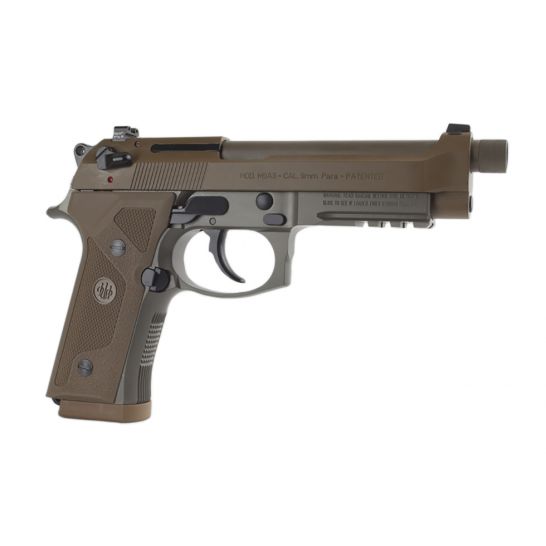
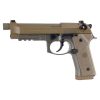
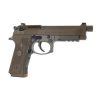
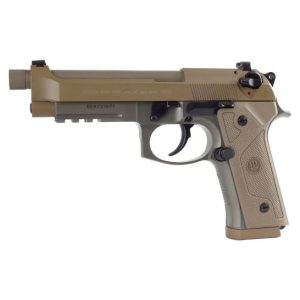
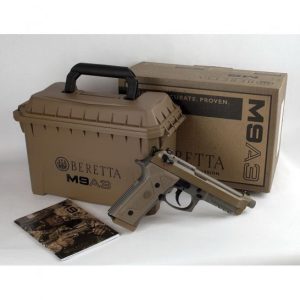
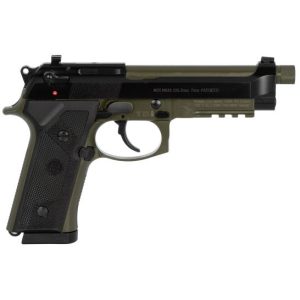
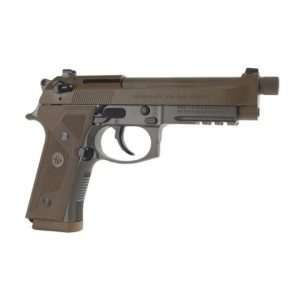
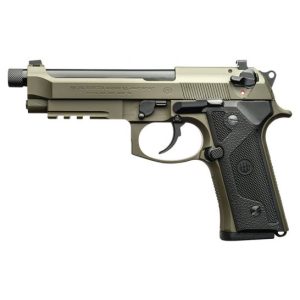
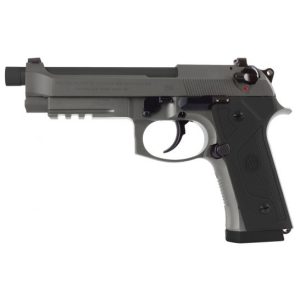
Reviews
There are no reviews yet.